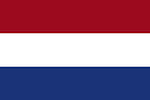The Royal Netherlands Navy (RNLN) is a modern, technologically advanced maritime force undergoing a significant and ambitious modernization of its fleet. Its strategy is focused on being a "regional power projection" navy, capable of operating in high-intensity conflict scenarios, primarily within the NATO framework. Key mission areas include anti-submarine warfare (ASW), anti-air warfare (AAW), and mine countermeasures (MCM). The navy is transitioning to operate in a multi-domain environment, emphasizing shared situational awareness and the use of artificial intelligence and big data analysis. While it possesses the frigates and auxiliaries for sustained blue-water operations, it relies on land-based air support, defining it as a "green-water" navy with significant coastal, or "brown-water," capabilities.
The RNLN's combat fleet is centered on its De Zeven Provinciën-class air-defence and command frigates and the Karel Doorman-class multi-purpose frigates. These are complemented by Holland-class offshore patrol vessels for lower-intensity tasks, a fleet of advanced minehunters, and a capable submarine service that provides a valued stealthy, forward-operating capability for the alliance. The navy’s amphibious capabilities are robust, centered around its landing platform docks (LPDs) and the Netherlands Marine Corps, which is evolving to conduct more dispersed operations.
An unprecedented fleet renewal program will see nearly the entire surface fleet replaced over the next 15 years. This historic initiative includes new Anti-Submarine Warfare (ASW) frigates being built in collaboration with Belgium, and new Air Defence and Command Frigates to replace the current vessels. A new class of submarines, the Orka-class, will replace the long-serving Walrus-class, ensuring the continuity of this critical capability with long-range precision strike additions. Other significant acquisitions include a new Combat Support Ship, and the replacement of amphibious transport and patrol vessels.
